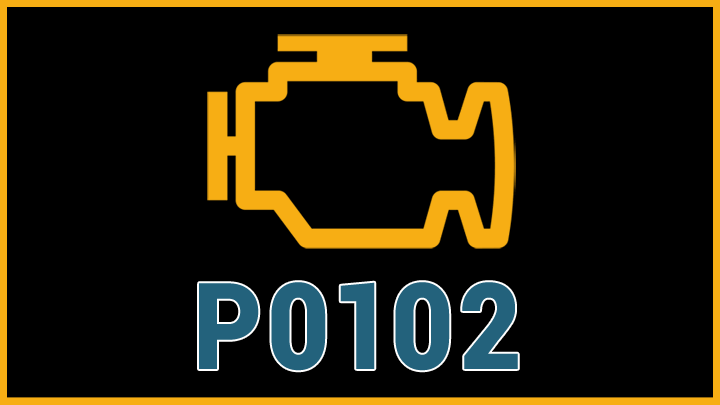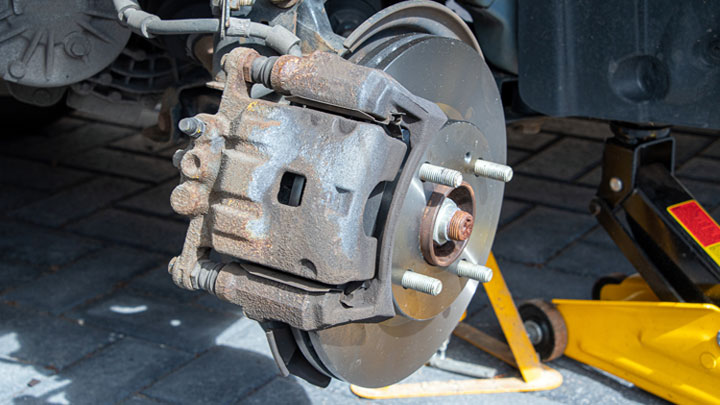Last Updated on December 12, 2022
Few circumstances interrupt an otherwise peaceful drive quite as abruptly, as the sudden appearance of a newly illuminated check engine light. One’s thoughts immediately begin to center around the possible cause of this light, as well as the costs associated with repairing such a condition. For many motorists, this is where anxiety begins to set in.
However, a check engine light seldom signals a situation as dire as our thought process would lead us to believe. In many cases, the root cause of such issues is minor in scope and easily repaired.
One trouble code that is commonly associated with a lit check engine light is DTC P0102. While the onset of a check engine light related to this code is never a welcome sight, hunting down and remedying its root cause is often far easier than most imagine.
Read on to learn more about code P0102, and what to do if your vehicle sets a code of this nature.
What Does Code P0102 Mean?
This means that a vehicle’s PCM (Powertrain Control Module) has determined that the incoming signal from the engine’s mass air flow sensor is below the lower threshold of its operating range. As a result, the PCM has determined this data to be irrational.
To better understand the significance of code P0102, one must first understand what a mass airflow (MAF) sensor is, and how it operates. A mass air flow sensor detects the volume of air that passes through an engine’s intake tract, at any given time.
This data is relayed to a vehicle’s PCM in real-time, which uses this data to calculate the proper amount of fuel to deliver, in order to optimize combustion.
Without rational input from the engine’s mass air flow sensor, the PCM cannot accurately meter fuel delivery, in the most optimal manner possible.
When a vehicle sets a P0102 trouble code, its PCM has determined that incoming data from the mass air flow sensor is invalid, and below the unit’s typical voltage threshold.
Related: Code P0100, Code P0101, Code P0103
Symptoms of Code P0102
In many cases, additional symptoms will present themselves with the presence of a P0102 diagnostic trouble code. Although these additional symptoms are not present in 100% of cases, they are prevalent enough to warrant a motorist’s attention.
The following are the most common symptoms associated with code P0102.
- Reduced Engine Power
- Rough Idle
- Dark Exhaust Smoke
- Engine Stalling
- Hard Starting
Causes of Code P0102
An active P0102 code can come as a result of several different underlying issues. The most common of these are as follows.
- Dirty Mass Air Flow Sensor
- Damaged or Failed Mass Air Flow Sensor
- Damaged Mass Air Flow Sensor Circuit Wiring or Connectors
- Vacuum Leaks
Is Code P0102 Serious?
Although code P0102 is not indicative of severe issues, prompt repair of any underlying condition is advised. When your vehicle is experiencing any MAF sensor related issue, fuel consumption can be adversely affected, leading to excess expenditure at the pump.
Additionally, some motorists might experience various drivability issues, when their vehicle actively exhibits a P0102 trouble code.
This condition has been known to cause engine stalling, as well as hard starting, which in turn leads to less than reliable vehicle performance. It is always best to address such issues, before being left stranded as symptoms worsen.
How to Fix DTC P0102

The following steps will assist you in diagnosing and repairing the root cause of your vehicle’s P0102 trouble code.
#1 – Check For Additional Codes
Prior to beginning the diagnostic process, check for the presence of additional codes with the use of a handheld OBD2 scanner. If additional codes are present, it will be necessary to determine which code takes precedence.
#2 – Inspect Mass Air Flow Sensor Wiring
Thoroughly inspect the wiring pigtail that pertains to your vehicle’s mass air flow sensor. Carefully check for any frayed, pinched, or broken wires. Also, verify that your harness’ connector is securely coupled to the mass air flow sensor and that all wires are adequately anchored within.
#3 – Check For Vacuum and Intake Leaks
Carefully check your engine’s intake tract for any obvious leaks. Cracked plastic boots and loose clamps can both compromise the intake system’s integrity.
Additionally, vacuum leaks can be identified with the use of a smoke machine, or alternatively, with an unlit propane torch while the engine is running. The propane from this torch can be waved across various vacuum hoses and intake system components, while listening for an audible change in idle.
#4 – Inspect Air Filter
Open your vehicle’s air filter housing to inspect the element within. If your air filter is dirty, contaminated with foreign debris, or otherwise compromised, replace it with an OEM equivalent filter.
#5 – Inspect MAF Sensor
Remove all necessary intake ducting to visually inspect the mass air flow sensor. The sensor body should be free of contaminants and other sources of fouling.
If the MAF sensor contamination is evident, the unit can be carefully cleaned with an approved cleaning solution such as CRC’s Mass Airflow Sensor Cleaner.
#6 – View Real-Time Data
If code P0102 persists, use your scan tool to view pertinent live streaming data (regular code readers typically don’t have this feature).
Compare the MAF sensor’s data with that which is specified by your vehicle’s manufacturer. Notate any out of range conditions. It is also advised to do the same with related sensors, such as the barometric pressure sensor.
#7 – Check Input Positive and Ground Signals
If the data uncovered in step #6 verified the existence of an out of range condition, back-probe all terminals at the MAF sensor to ensure that the sensor itself is receiving correct input and ground signals.
Factory service literature should be consulted to locate vehicle-specific values for comparison. If voltage or ground deficiencies are noted, determine their root cause.
#8 – Replace MAF Sensor
If correct input voltage and ground signal is verified during step #7, replace your engine’s MAF sensor. It is recommended to only use a sensor of OEM equivalency.




